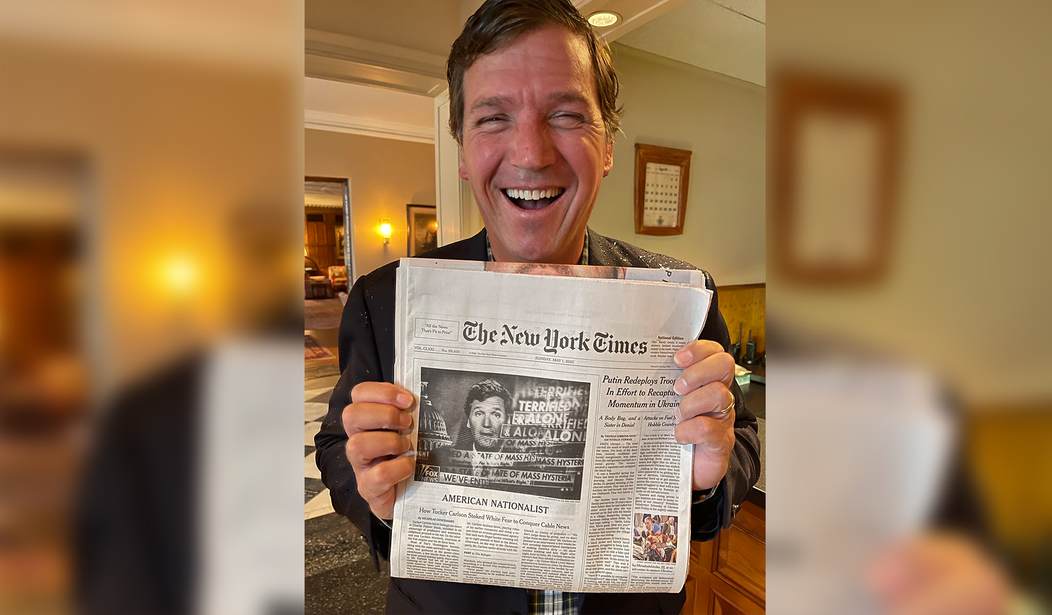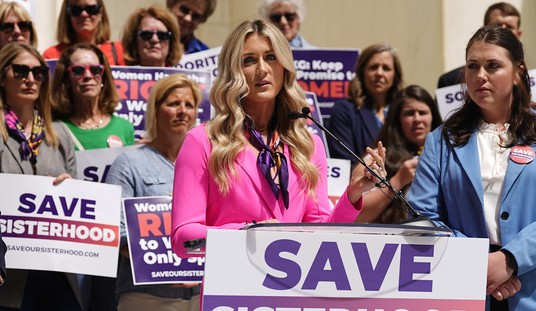The press loves to express alarm over disinformation, yet gets exposed when journalists spread it freely.
The New York Times has come out with a deep analysis of the Biden administration’s second attempt at formulating a misinformation task force to police social media and news outlets. Their subheading is both disturbing in its scope, and in the lack of criticism leveled at the amount of governmental overreach suggested: Numerous federal agencies agree that widely promoted falsehoods threaten the nation’s security. Doing something about them is another matter.
The Times also addresses, uncritically, the deposed director of the first failed attempt at a disinformation board, Nina Jankowicz.
A prominent author and researcher in the field of disinformation, who once advised Ukraine’s government, Ms. Jankowicz became a focus of the furor, targeted online by false or misleading information about her role in what critics denounced as a Ministry of Truth.
Notably lacking in their truncated bio of the woman is her own exposed forays into the realm of disinformation. Jankowicz had stated the Hunter Biden laptop story was a Russian hoax, she denied she proposed having verified Twitter accounts edit user content–though she is on video saying just that–and she was an enthusiastic proponent of the Russian collusion sham. For that matter, so is the New York Times, in this very article.
Its roots began in Russia’s interference in the 2016 election of President Donald J. Trump, which he and his allies repeatedly denounced as fake despite evidence compiled by federal investigators about Russian complicity.
The level of unquestioned support for a governmental initiative of this type and the selective facts used in a lobbying effort is revealing. The Times is clearly on board with giving the federal offices control over aspects of our public discourse, and there is ample evidence – right now – that this application of disinformation standards will be extremely selective and fluid in nature. Yet, wen it is the press engaged in a disinformation campaign, there is little to no pushback from these same voices.
There has been a disturbing trend from the news outlets and journalist set in recent years to champion the cause of the federal government clamping down on free expression. These are the people supposedly charged with holding the government accountable, yet they forward the idea that government policy should silence certain voices–if those are declared to be “misinformation.” CNN’s supposed media maven, Brian Stelter, supported the first attempt, calling it “common sense,” and “basic government bureaucracy.”
“This has been mostly a Fox World story,” @BrianStelter ridicules “a lot of right wing uproar” over DHS “Disinformation Governance Board.” It “sounds like common sense, but when I Google this all I see is like ‘Joe Biden’s Ministry of Truth’…” pic.twitter.com/znNTqeZapK
— Brent Baker 🇺🇦 (@BrentHBaker) May 1, 2022
That it would be governmental figures, or their allies in the press, who are making the determination of what is deemed mis/mal/dis-information is a detail the press would rather we overlook. We should not consider it to be a disturbing trend toward centralized thought police; they desire that to be the case. Except the concept of free expression is not predicated on the unanimous agreement of propriety; it permits wrong, inaccurate, or uncomfortable speech. Yet the press loves to cloak itself with a concern for the future of our democracy, based on its own determined levels of accepted speech.
Currently, we have a bizarre and revealing example of the selective nature of this outcry. The past couple of days, a number of major figures in journalism have been spreading the word – via Salon Magazine – that Florida’s Governor Ron DeSantis is signing a law that will force university faculty members, administration officials, and students to register their political affiliation with the state.
In a move that defies logic, a number of blue-checked accounts and notable journalists are spreading this piece, impugning the governor and inspiring a wide array of vocal responses of opposition. What makes so little sense is that this story is completely false.
For starters, it comes from Salon. Secondly, it was written in June 2021. Most telling, the story was completely debunked – over a year ago. Yet look at all the certified accounts spreading this as a current and factual news item. These are the same type of verified accounts we were told should be able to ascertain the facts and correct the record of user accounts as they see fit.
The revelatory aspect is that we see no outrage over this unified response today. The so-called concerned set of disinformation experts is tellingly muted about this activity, when–if anything–it should receive heightened scrutiny. If accounts of general users are to be flagged for delivering misleading information, then these types of accounts should be policed even more. They generally have a greater outreach, and they carry more heft and influence, as they are regarded as reliable sources.
Instead, these prevarications from verified accounts are ignored or excused, because they reside on the proper side of the ledger, and thus are granted the leeway to disseminate the very type of misinformation we are told is injurious to our democracy. This lays out the complete sham of a centralized “truth authority”.
Those operating this office are the arbiters of approved speech, and the members of the press want in. Over the years the journalists have seen their influence on the national narrative waning, as people can seek out alternative outlets and gain varying perspectives. The solution is for the government and media to target those outlets and dictate approved narratives. That the press does not see a problem in teaming up with the very governmental figures they are supposed to be policing, in order to police the public forum, is what is becoming the looming problem.














Join the conversation as a VIP Member